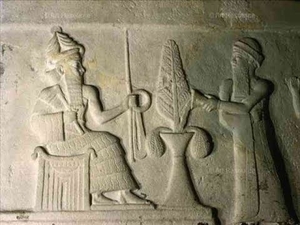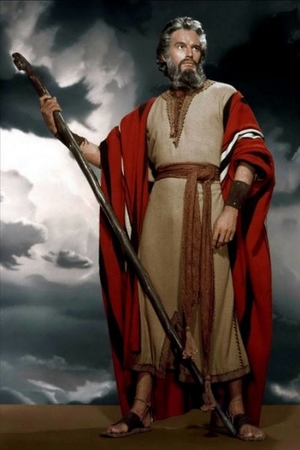
| SCEPTRE IN DIFFERENT RELIGIONS
Sumerian 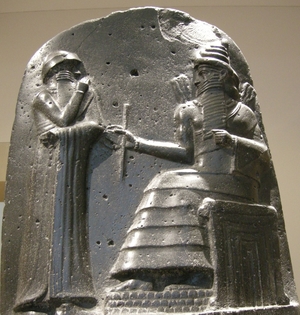
Sumerian
Egypt 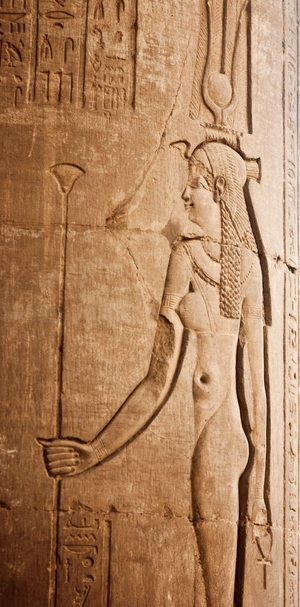
Egypt
Judaism 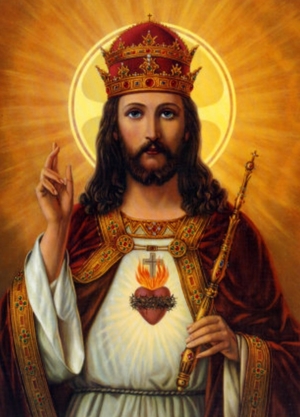
Christianity Sceptre is also known as Staff / wand and Dand in Sanskrit.
Sumerians are Aryans and Sceptre has been part of Aryan civilization.
To know more about Sumerians Click here.
Introduction :
The WAS Sceptre and other types of staves were signs of authority in Ancient Egypt. For this reason they are often described as sceptres, even if they are full-length staffs. One of the earliest royal sceptres was discovered in the 2nd Dynasty tomb of Khasekhemwy in Abydos (Khasekhemwy Reign : 18 years ca. 2690 BC (2nd Dynasty)). Kings were also known to carry a staff, and Pharaoh Anedjib is shown on stone vessels carrying a so-called mks-staff. The staff with the longest history seems [clarification needed] to be the heqa-sceptre (the shepherd's crook).
The sceptre also assumed a central role in the Mesopotamian world, and was in most cases part of the royal insignia of sovereigns and gods. This is valid throughout the whole Mesopotamian history, as illustrated by both literary and administrative texts and iconography. The Mesopotamian sceptre was mostly called Gidru in Sumerian and Hattum in Akkadian.
Among the early Greeks, the sceptre (staff, stick, baton) was a long staff, such as Agamemnon wielded (Iliad, i) or was used by respected elders (Iliad, xviii. 46; Herodotus 1. 196), and came to be used by judges, military leaders, priests, and others in authority. It is represented on painted vases as a long staff tipped with a metal ornament. When the sceptre is borne by Zeus or Hades, it is headed by a bird. It was this symbol of Zeus, the king of the gods and ruler of Olympus, that gave their inviolable status to the kerykes, the heralds, who were thus protected by the precursor of modern diplomatic immunity. When, in the Iliad, Agamemnon sends Odysseus to the leaders of the Achaeans, he lends him his sceptre.
Among the Etruscans, sceptres of great magnificence were used by kings and upper orders of the priesthood. Many representations of such sceptres occur on the walls of the painted tombs of Etruria. The British Museum, the Vatican, and the Louvre possess Etruscan sceptres of gold, most elaborately and minutely ornamented.
The Roman sceptre probably derived from the Etruscan. Under the Republic, an ivory sceptre (sceptrum eburneum) was a mark of consular rank. It was also used by victorious generals who received the title of imperator, and its use as a symbol of delegated authority to legates apparently was revived in the marshal's baton.
In the First Persian Empire, the Biblical Book of Esther mentions the sceptre of the King of Persia. Esther 5:2 When the king saw Esther the queen standing in the court, she obtained favor in his sight; and the king held out to Esther the golden scepter that was in his hand. So Esther came near, and touched the top of the scepter.
Under the Roman Empire, the sceptrum Augusti was specially used by the emperors, and was often of ivory tipped with a golden eagle. It is frequently shown on medallions of the later empire, which have on the obverse a half-length figure of the emperor, holding in one hand the sceptrum Augusti, and in the other the orb surmounted by a small figure of Victory.
In Vedic Aryans Sceptre is mostly used by Brahmin Monks known as Shankaracharya. In India Sceptri was and is used by Kings, Shankaracharyas, Gatekeepers (dwarpal) of Temples and Kings Court, Sadhus, etc.
Sceptre in Veds :
Sceptre is older than Veds but, since, for guidance we are left with one of the oldest scriptures in the world known as Veds, when we search in the Veds we get the answer on how Sceptre started.
There are total 4 Veds :
Above dates are related to completion of Veds.
Note :
Veds mention word Udumbara and Parichi i.e., The guardian palaswood staff which is laid outside the sacred enclosure, and which nothing unclean must pass.
In english translation of Veds Sceptre is called Staff.
a) Sam Ved :
1. Prapa'thaka VI, Fifth Das'ati :
7. As among kings, or among learned men in the assembly of the sages1 or among rustics, emulation is produced; so in this sacrifice, where the covered up liquid is being purified, whenever (a similar spirit prevails), I, like the Brahman armed with the sacrificial staff, sing verses to procure the increase of our cattle.
(Notes : The original is Parichi ; i.e., the guardian palas•wood staff which is laid outside the sacred enclosure, and which nothing unclean must pass.)
To download the Sam Ved Pdf to know about the above mantra Click here.
1. Book the Third :
61. This, Rudra, is thy food: with this depart beyond the Mujavaus. With bow unstrung, with mufled staff, clothed in a garmeut made of skin, gracious, not harming us, depart.
2. Adhvara Khanda, Chapter 1, Brahmana III :
18. (One reason) why he thus bends his fingers is (that he thinks) "I do not in this manner commence (take hold tangibly) in the sacrifice as (in the manner) this cloth or staff or any other thing in human practice". Verily the gods are the sacrifice. The gods are invisible, as it were. Thus (by bending his fingers) he indeed commences (takes hold of) the invisible sacrifice itself (chanting) "Svaha (I take hold of) the sacrifice from the mind". Thus he takes hold of this from the mind Svaha from the vast mid-region. Thus he takes hold (ofthe sacrifice) from the vast mid-region. "Svaha from the heaven and the earth" - thus he takes hold of this from these two viz., heaven and earth on which all this (universe) rests. "Svaha from the wind I take hold, -This which blows (the wind) is indeed the sacrifice. Thus he visibly (directly) takes hold of this. Why he says 'Svaha', 'Svaha' (each time) is that he thus verily accepts this (sacrifice) as his own. Thushe takes this into himself. (He thinks) "Having taken the sacrifice into myself, let me undertake the vow. Now he restrains his speech (undertakes the vow of silence). Indeed speech is sacnfice, (He thinks), "Having taken the sacrifice into myself, let me undertake the vow".
3. Chapter 2, Brahmana I :
23.
Then he (the Adhvaryu) gives to him (a staff) of 'Udumbara' (ficus
Glomerata) tree. Yajnavalkya said, "The Udumbara (staff) is
verily for holding (for support). If not one, the 'upasad' ritual
may transgress". The staff is really the thunderbolt, for driving
away evil forces. It is of the Udumbara tree. Udumbara is food,
strength. Therefore is it (the staff) made of 'Udumbara' wood. It
is upto the mouth (measured up to the mouth) (in length). For this
strength is upto die mouth.
(Notes : 10. He binds on and addresses a girdle of two plaited strands of hemp and one of Munja grass. Angirases: descendants of Angiras, a semi-divine patriarchal Rishi. See Index to The Hymns of the Rigveda. Garment-knot: the meeting ends of the cloth worn round the body; 'tuck' : Eggeling. Of Soma : belonging to Soma after the consecration of the wearer, and to the Fathers before that ceremony. Vishnu's: the Sacrificer's. The womb of Indra : be addresses a black-buck's horn which he ties to the fringe of his garment. See the legend. Sacred Books of the East. XXVI. 30-38. Mahidhara gives a somewhat similar legend, from the Taittiriya-Samhita, ascribing Indra’s birth to the union of Yajna (Sacrifice) with Dakshina, Sacrificial Guerdon instead of Vak (Speech). Make the crops : he draws a line with the horn on the ground. O Tree: a staff of Udumbara (Ficus Glomerata) wood which the Adhvaryu gives to the Sacrificer.)
To download the Shukla Yajur Ved Complete Kanva Shakh (branch) Pdf to know about the above mantra Click here.
1. Book 5, Hymn V :
Whatever wound the arrow, or the staff, or violence inflicts, Thereof thou art the remedy: as such restore this man to health.
2. Book 10, Hymn IV :
I kill the scorpion with a club, and with a staff the new-come snake.
3. Book 10, Hymn VIII :
Thou art a woman, and a man; thou art a damsel and a boy. Grown old thou totterest with a staff, new-born thou lookest every way.
4. Book 18, Hymn II :
59. From his dead hand I take the staff he carried, together with his lore and strength and splendour. There art thou, there; and here with good men round us may we o'ercome all enemies and foemen.
To download the Atharv Ved Pdf to know about the above mantra Click here. |
